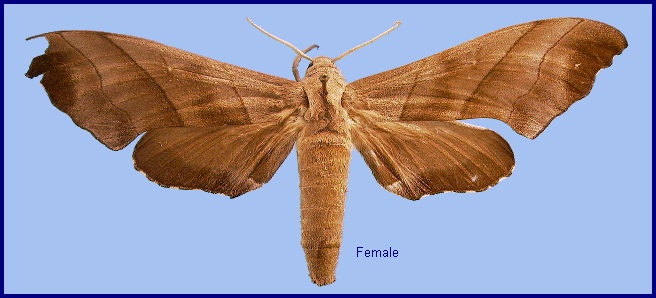
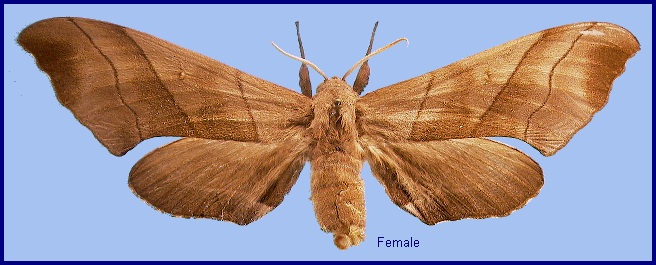
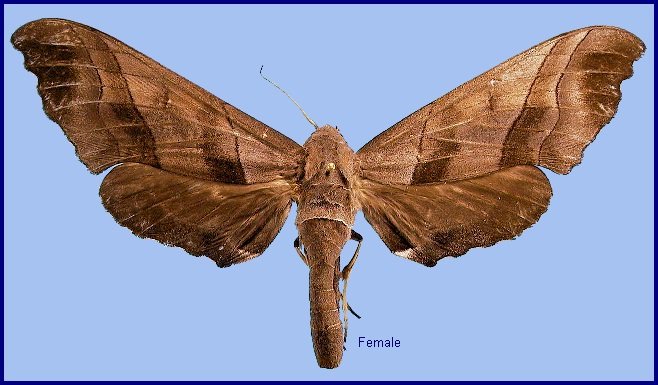
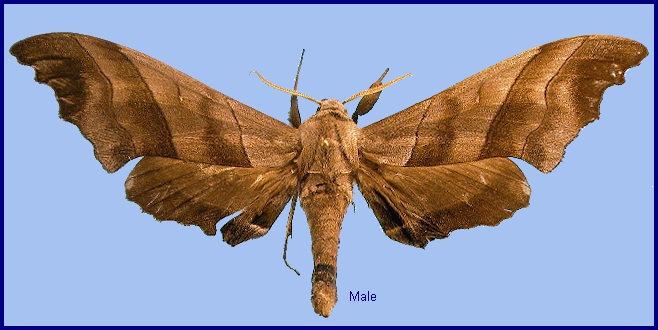
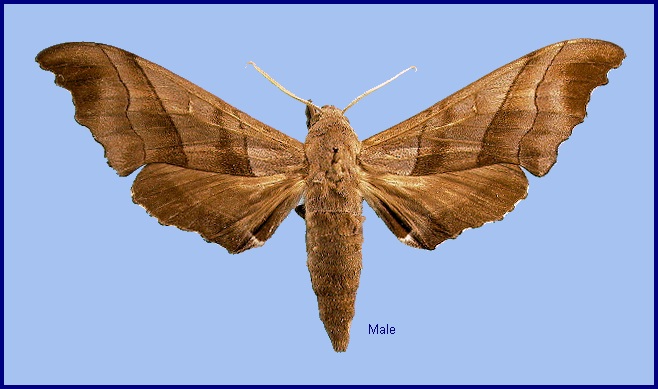
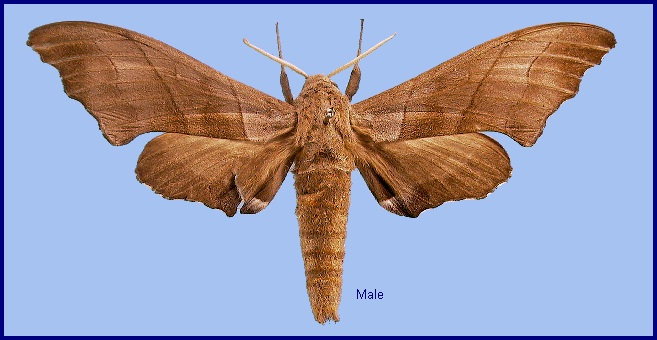
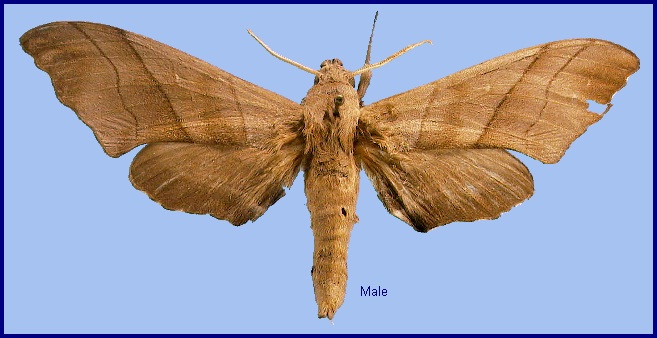
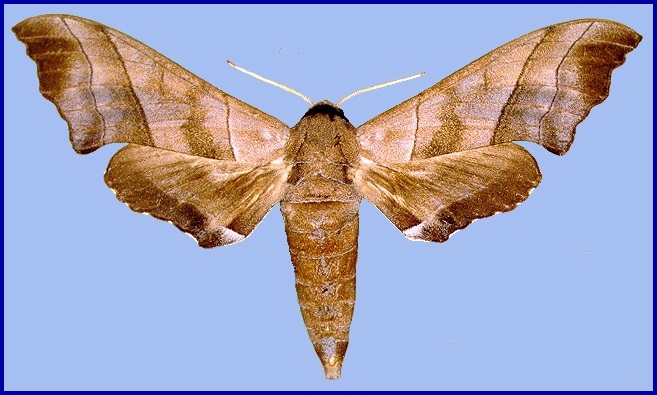
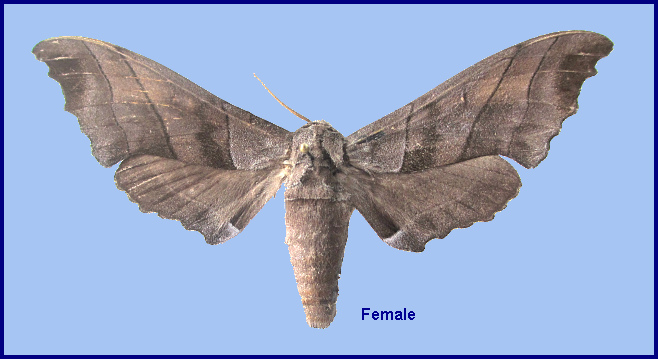
Polyptychus trilineatus Moore, 1888, Proc. zool. Soc. Lond. 1888: 390. Type locality: [India, Himachal Pradesh,] Dharmsala.
Synonym. Polyptychus trilineatus undatus Rothschild & Jordan, 1903. Type locality: India, Assam [Meghalaya], Khasia Hills [Khasi Hills].
Synonym. Polyptychis [sic] trilineatus costalis Mell, 1922. Type locality: South China.
Synonym. Polyptychus trilineatus kelanus Jordan, 1930. Type locality: [Indonesia,] Sumatra, [Aceh,] Langkat [Langka], Balei Codjah [Balei Gadjah].
Synonym. Polyptychus trilineatus mincopicus Jordan, 1930. Type locality: [India,] Andaman Islands, Port Blair.
Note. Transferred to Polyptychus by Moore, 1888, Proc. zool. Soc. Lond. 1888: 390. Synonymized with Polyptychus dentatus by Hampson, [1893], Fauna Brit. India 1: 69. Reinstated as a species by Rothschild & Jordan, 1903, Novit. zool. 9 (suppl.): 236.
Note. In their work on Polyptychus trilineatus, Melichar, Haxaire & Manjunatha (2021) (European Ent. 13(1): 13), promoted the following former subspecies to full species: Polyptychus luteatus Rothschild & Jordan, 1903, Polyptychus sonantis Jordan, 1930, Polyptychus celebensis Clark, 1929, Polyptychus philippinensis Rothschild & Jordan, 1903 and Polyptychus javanicus Gehlen, 1931. All remaining subspecies of Polyptychus trilineatus were synonymized with the nominotypical subspecies. Consequently, there are now no subspecies recognized in Polyptychus trilineatus. Polyptychus claudiae Brechlin, Kitching & Cadiou, 2001 from the lesser Sunda Islands (Sumbawa, Lombok, Sumba, Komodo, Flores and Timor) is still considered a valid species.
Wingspan: 74--112mm. Very similar to Polyptychus chinensis Rothschild & Jordan, 1903 and Polyptychus dentatus (Cramer, 1777) but distinguishable by the convex section to the submarginal line between forewing veins M2 and Cu2. Forewing outer margin slightly to strongly crenulated. Forewing upperside ground colour varies from pale brown to purplish-grey.
In the male genitalia, uncus narrowing to a long, strong, acute hook, apex pointed, not emarginate as in Polyptychus dentatus. Gnathos a small fold. Transtillae with a pair of long, posteriorly-directed, needle-like processes. Juxta with two ventral processes medially fused to form a single fishtail-shaped process; dorso-lateral processes very unequal, right process long and pointed, projecting beyond middle of valve, left process short and apically rounded. Valve divided apically by a longitudinal slit; dorsal lobe rather weak, apically dilated and incurved; irregularly spatulate; ventral lobe with two incurved apical teeth, set close together ventral tooth slightly longer than dorsal tooth. In the female genitalia, eighth tergite (A8) excavated, with a sharp prominent cone on the upper surface at each side directed posteriorly. Sterigma differs markedly in shape from Polyptychus dentatus, notably the lamella postvaginalis is much larger, distal margin slightly emarginate, medially somewhat produced and downcurved, so that it appears medially almost sinuate in posterior view, angles of lamella rounded.
China: iv-x (Hong Kong); v (Yunnan); 23.viii.2012 (Xizang/Tibet).
OVUM: Pale green when laid, and almost spherical (2.2mm) (Eitschberger & Nguyen, 2016e).
LARVA: Full-fed 76--80mm. Very similar to that of Polyptychus dentatus (Bell & Scott, 1937). First instar larvae appear not to feed and wander around a lot looking for a suitable site to change into the second instar (Eitschberger & Nguyen, 2016e).
[Illustrated in Eitschberger & Ihle, 2014]
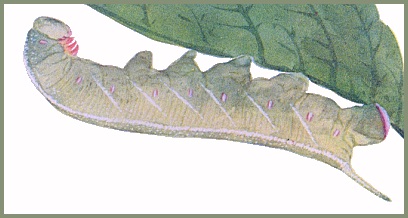
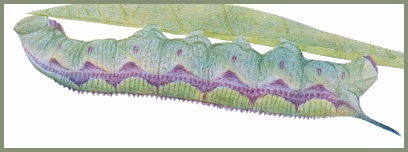

PUPA: 28--30mm. Very similar to that of Polyptychus dentatus (Bell & Scott, 1937).
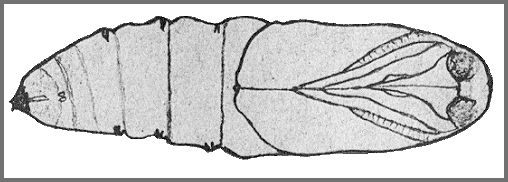
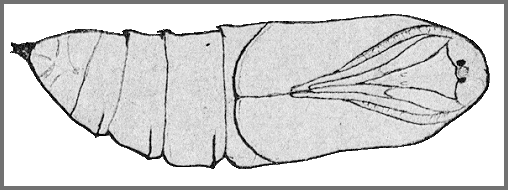

Larval hostplants. Ehretia (Boraginaceae) (Inoue, Kennett & Kitching, [1996] 1997). On Ehretia laevis in India (Bell & Scott, 1937), and Ehretia acuminata in Thailand (Eitschberger & Ihle, 2014) and Guangdong (Mell, 1922b).
China: Yunnan (Mengla; Menglun County, Xishuangbanna Botanical Garden; Changning Co., Songzhishanding, 2800m); Xizang/Tibet (Motuo/Metok/Mędog/Pemako, near Indian border; Beibeng Yalungzangbo, 1600m); Hubei (Yichang); Jiangxi (Lichuan; Xunwu County); Guangdong (Laowei; Sanfutian; Longzhou); Hong Kong; Hainan (Wanling; Wuzhi Shan, 1500m).
Northern Pakistan (Margalla Hills, Pir Sohawa, 1000m, 73°08'E, 33°49'N, 4.viii.1998, leg. Z. Varga & G. Ronkay) (Rafi et al., 2014), northern India (Subhasish Arandhara, 2016), Nepal, Bhutan (Irungbam & Irungbam, 2019), Bangladesh, Burma/Myanmar, southern China (Xizang/Tibet to Hainan), Thailand, Laos and Vietnam. Also, Mindanao Island in the Philippines, the Andaman and Nicobar Islands (Singh, Ahmad & Chandra, 2021) and northern Sumatra, Indonesia.
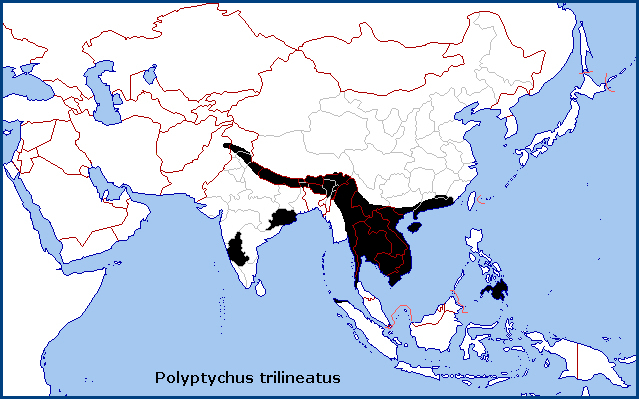
 Return to Sphingidae of the Eastern Palaearctic species list
Return to Sphingidae of the Eastern Palaearctic species list